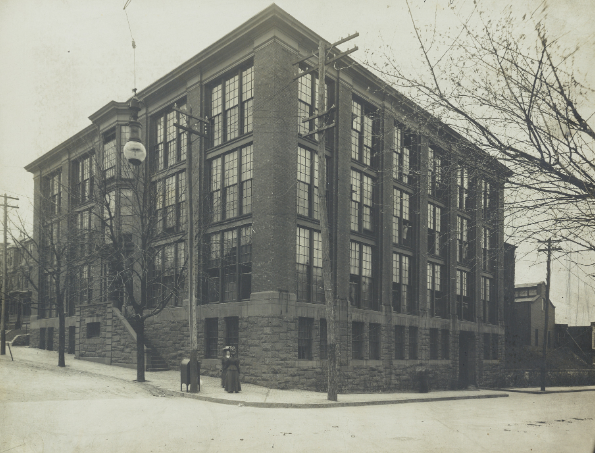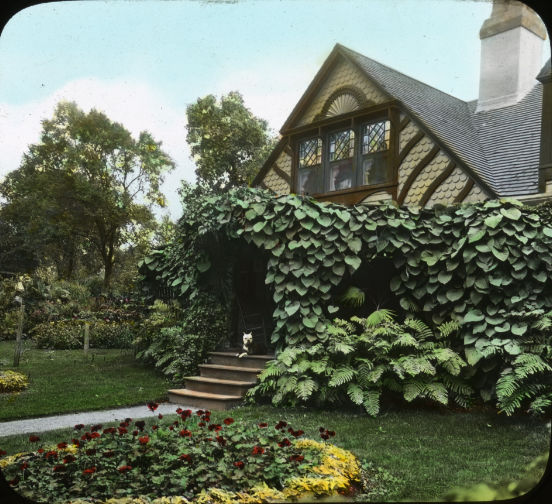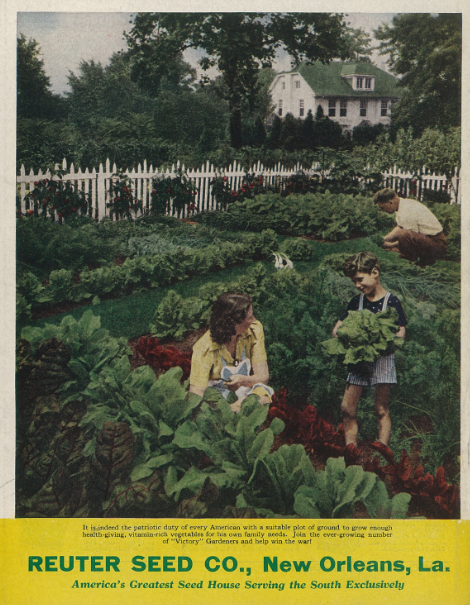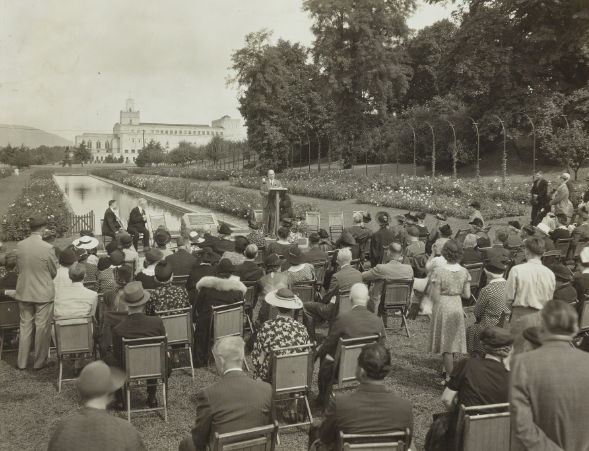The Most Famous Man You’ve Never Heard of: J. Horace McFarland
He had a great appreciation for roses, ink, and paper. He lavished as much attention on national parks in the U.S. as he did on his own garden. If you don’t recognize the name J. Horace McFarland, you’re not alone. He might be the most famous man you’ve never heard of.
McFarland (1859 – 1948) spent his entire life in and around Harrisburg, Pennsylvania. His father was an educator, nurseryman, and publisher of a small temperance newspaper. All three of these professions would play an important part in McFarland’s life. While still a teenager, he purchased his father’s small press. The horticultural knowledge he gained working in his father’s nursery led to him successfully carve out a business niche for himself as a printer of seed catalogs and other horticultural publications through the Mount Pleasant Press (later the J. Horace McFarland Company).

[Fig. 1: PA296013] McFarland’s Mount Pleasant Press—seen here in 1907—offered a full menu of publishing services, everything from art, copy, and photography to printing and advertising. It was located near Harrisburg’s rail lines, making it convenient for shipping out catalogs and publications put out by the firm.
Whatever it printed, Mount Pleasant Press emphasized quality and accuracy. The firm touted its “Intelligent Printing,” made possible by proofreaders who were skilled in reading scientific copy, a particularly important benefit when it came to citing plant names. McFarland himself was so well versed in the publishing trade that he set up the Harvard Graduate School of Business’s first “Printing and Publishing” course and lectured there from 1912 to 1917.

[Fig. 2: MA036001]. In the early twentieth century, Mount Pleasant Press manufactured thousands of glass lantern slides that were used in illustrated lectures it rented and sold—the PowerPoints of their day. These slides, like the Walter A. S. Chrimes Garden in Hingham, Massachusetts here (1904), were often hand-tinted by a ‘colorist’ using translucent paints.
As if running a highly successful business wasn’t enough, McFarland was devoted to bettering the quality of life for people at the local and national levels. He served on the executive committee of the Municipal League of Harrisburg for 45 years. To secure support and funding for needs like parks, street paving, and water and sewage improvements, McFarland lectured extensively to educate voters about the issues and enlist the support of city leaders, the business community, and the general public. His success with the “Harrisburg Plan” helped launch his national advocacy career.

[Fig. 3: PA269002] Mount Pleasant Press photographed thousands of gardens across the United States as well as its own backyard of Harrisburg like the Mathias Garden here in 1949. Whether modest or ornate, they document America’s garden history which has often disappeared over time.
McFarland was elected the first President of the American Civic Association (ACA) and held that position for 20 years. This group advocated for effective civic planning and improvements throughout the U.S. While ACA’s many efforts were often associated with the City Beautiful Movement, McFarland thought the term ‘City Beautiful’ was a “vague and sentimental ideal.” He preferred characterizing it simply as “the city clean, the city practical, the city efficient.” He believed in both utility and idealism—advocating that clean cities and handsome public buildings and park systems, along with the ridding of eyesores, would lead to a higher moral order. “First we need to clean up,” he explained, “and then to dress up.”
McFarland’s efforts on behalf of the nation found him drafting the first version of a bill to create what would eventually become the National Park Service. Landscape architect Frederick Law Olmsted, Jr. worked with McFarland on revisions to the bill which took six years of politicking before becoming law. McFarland continued to work on Park Service matters until his death, serving on various boards and advocating in favor of adding sites like the Everglades to the NPS roster.
Helping him in these efforts was his natural ability as a writer and critic. He wrote hundreds of articles on subjects ranging from horticulture and gardens to printing and photography. He could be a bit of a gadfly, once confessing that he was “much inclined to explode on paper.” McFarland generated thousands of letters in the course of his business and advocacy work, one year sending over 1,600 business letters and 1,100 letters on civic issues.

[Fig. 4: PA083286] J. Horace McFarland looking over Mary Wallace roses in his gardens at Breeze Hill, June 1943. His book, My Growing Garden (1915), featured chapters devoted to each month in his garden–plus one on weeds.
Despite his monumental business and advocacy endeavors, McFarland somehow found the time to become one of the most noted rosarians of his day. His many books on roses included Modern Roses (1930) that described over 2,500 varieties. He also edited the American Rose Society’s American Rose Annual for close to three decades. McFarland’s own gardens at Breeze Hill, his home in Harrisburg, served as trial gardens for hundreds of plants tested for commercial growers and the USDA. During their heyday, the public was welcome to visit and enjoy these gardens.

[Fig. 5] McFarland’s gardens at Breeze Hill were frequently used as backdrops for staged shots that were subsequently used in catalogs and publications put out by Mount Pleasant Press. The seed catalog here highlights the Victory Garden grown at Breeze Hill during World War II. Smithsonian Libraries and Archives, Trade Literature Collection.
Sadly, McFarland’s renown waned in the years after his death. Aside from having three roses named in his honor, fewer and fewer people recognized his name and what he accomplished. Fortunately, J. Horace McFarland: A Thorn For Beauty, an outstanding biography written by Ernest Morrison in 1995, resurrected his legacy and brought to light his many achievements.

[Fig. 6: PA243008] The Harrisburg Municipal Rose Garden was dedicated in McFarland’s honor by the American Rose Society in 1938. It was later destroyed to make way for a hospital parking lot.
Why is McFarland being highlighted in the Smithsonian Gardens Newsletter? SG’s Archives of American Gardens (AAG) was fortunate to be one of three repositories able to salvage thousands of images generated by his company when it closed in the early 1990s. (The other two are the USDA’s National Agricultural Library and the Pennsylvania State Archives.) These images had been used to illustrate countless nursery and seed catalogs, articles, books, and lectures during the first half of the twentieth century. AAG includes over 3,000 McFarland Company images documenting more than 700 gardens across the U.S., all of them available online. We have J. Horace McFarland and his firm to thank for capturing so much ephemeral beauty and history through these garden images.
Unless otherwise indicated, all images from the Archives of American Gardens, J. Horace McFarland Company Collection

